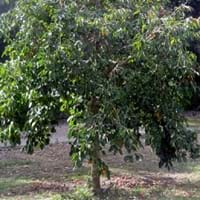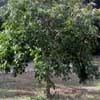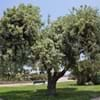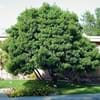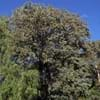Life Span
Perennial
Perennial
Origin
China, Japan
Australia
Types
Not Available
Not Available
Habitat
Damp forests, Woodlands
Scrubs, tussock grasslands, Upland savannas
USDA Hardiness Zone
6-10
10-11
Sunset Zone
H1, 6, 7, 8, 9, 12, 14, 15, 16, 18, 19, 20, 21, 22, 23, 24
8, 9, 12, 13, 14, 15, 16, 17, 18, 19, 20, 21, 22, 23, 24
Habit
Pyramidal
Upright/Erect
Flower Color
Light Yellow
Lemon yellow
Flower Color Modifier
Bicolor
Bicolor
Fruit Color
Orange
Gray Green
Leaf Color in Spring
Green
Blue Green
Leaf Color in Summer
Green
Blue Green
Leaf Color in Fall
Yellow, Burgundy, Orange Red
Blue Green
Leaf Color in Winter
Not Available
Blue Green
Leaf Shape
Oval
Long Narrow
Plant Season
Summer, Fall, Winter
Spring
Sunlight
Full Sun, Partial Sun
Full Sun
Type of Soil
Clay, Loam
Loam, Sand
The pH of Soil
Acidic, Neutral
Acidic, Neutral, Alkaline
Soil Drainage
Well drained
Well drained
Bloom Time
Summer
Spring, Late Winter
Tolerances
Not Available
Drought
Where to Plant?
Ground
Ground
How to Plant?
Grafting, Seedlings, Stem Cutting
Seedlings
Plant Maintenance
Medium
Medium
Watering Requirements
Use Mulches to help prevent water loss during hot and windy weather
Do not water excessively
In Summer
Lots of watering
Lots of watering
In Spring
Moderate
Moderate
In Winter
Average Water
Average Water
Soil pH
Acidic, Neutral
Acidic, Neutral, Alkaline
Soil Type
Clay, Loam
Loam, Sand
Soil Drainage Capacity
Well drained
Well drained
Sun Exposure
Full Sun, Partial Sun
Full Sun
Pruning
Prune central stem
Remove dead or diseased plant parts, Requires little pruning
Fertilizers
All-Purpose Liquid Fertilizer
All-Purpose Liquid Fertilizer, No fertilizers needed
Pests and Diseases
Red blotch
Insects, Root rot
Plant Tolerance
Drought
Drought
Flowers
Insignificant
Showy
Flower Petal Number
Single
Single
Foliage Texture
Medium
Fine
Foliage Sheen
Glossy
Matte
Self-Sowing
Not Available
Yes
Attracts
Birds
Butterflies
Allergy
Nausea, Swelling in the face
Asthma, Eye irritation, Headache, Nose Irritation, Throat itching, Vomiting
Aesthetic Uses
Not Available
Showy Purposes
Beauty Benefits
Not Available
Not Available
Environmental Uses
Erosion control, Food for birds, Shadow Tree
Air purification, soil stabilisation
Medicinal Uses
Diarrhea, Increase fiber amount, Stomach Ulcers
Not Available
Part of Plant Used
Fruits
Flowers, Sap, Seeds
Other Uses
Can be made into a herbal tea, Making Perfumes, Making Sweet Scented Oil
Used as a dye, Wood is used fore making tools
Used As Indoor Plant
No
No
Used As Outdoor Plant
Yes
Yes
Garden Design
Feature Plant, Fruit / Fruit Tree, Topiary / Bonsai / Espalier
Shade Trees, Street Trees
Botanical Name
DIOSPYROS kaki 'Fuyu'
ACACIA aneura
Common Name
Asian Persimmon, Fuyu Persimmon, Japanese Persimmon, Kaki
Mulga, True Mulga
In French
Plaqueminier
Mulga
In Spanish
Diospyros kaki
Mulga
In Polish
Hurma wschodnia
Mulga
Phylum
Spermatophyta
Magnoliophyta
Class
Magnoliopsida
Magnoliopsida
Family
Ebenaceae
Fabaceae
Clade
Angiosperms, Asterids, Eudicots
Angiosperms, Eudicots, Rosids
Tribe
Not Available
Not Available
Subfamily
Not Available
Not Available
Number of Species
Not Available
Not Available
Importance of Kaki and Mulga Tree
Want to have the most appropriate plant for your garden? You might want to know the importance of Kaki and Mulga Tree. Basically, these two plants vary in many aspects. Compare Kaki and Mulga Tree as they differ in many characteristics such as their life, care, benefits, facts, etc. Every gardener must at least have the slightest clue about the plants he wants to plant in his garden. Compare their benefits, which differ in many ways like facts and uses. The medicinal use of Kaki is Diarrhea, Increase fiber amount and Stomach Ulcers whereas of Mulga Tree is Not Available. Kaki has beauty benefits as follows: Not Available while Mulga Tree has beauty benefits as follows: Not Available.
Compare Facts of Kaki vs Mulga Tree
How to choose the best garden plant for your garden depending upon its facts? Here garden plant comparison will help you to solve this query. Compare the facts of Kaki vs Mulga Tree and know which one to choose. As garden plants have benefits and other uses, allergy is also a major drawback of plants for some people. Allergic reactions of Kaki are Nausea and Swelling in the face whereas of Mulga Tree have Asthma, Eye irritation, Headache, Nose Irritation, Throat itching and Vomiting respectively. Having a fruit bearing plant in your garden can be a plus point of your garden. Kaki has showy fruits and Mulga Tree has no showy fruits. Also Kaki is not flowering and Mulga Tree is not flowering . You can compare Kaki and Mulga Tree facts and facts of other plants too.
